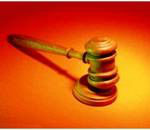Will Supreme Court Consider New Rules for Peremptory Challenges?

In early 2014, the U.S. Supreme Court will consider whether to revisit the controversial practice of peremptory challenges. Preemptory challenges allow lawyers to exclude a potential juror without providing any reason or explanation. However, in Batson v. Kentucky, 476 U.S. 79 (1986), the U.S. Supreme Court held that the Equal Protection Clause of the U.S. Constitution prohibited the use of peremptory challenges to exclude prospective jurors based on their race. The ruling has been extended to include gender, ethnicity and any other classification that calls for heightened judicial scrutiny.
The Facts of the Case
In Williams v. California, 372 U.S. 713 (1963), the prosecutor used peremptory challenges to remove five of six qualified African-American women prospective jurors. When the defense made a so-called Batson objection, the prosecutor responded that notwithstanding the substance of their voir dire answers, it was the prosecutor’s “impression,” based on each woman’s “demeanor,” that they would not impose the death penalty.
Although the trial judge acknowledged that she had no recollection of at least two jurors, she relied on the prosecutor’s notes and proffered reasons for excluding the jurors to deny the Batson objections, The trial court further observed that “black women are very reluctant to impose the death penalty.” Williams was subsequently convicted and sentenced to death. In 2013, the California Supreme Court this year upheld Williams’ conviction, after finding that the trial judge did not err in her evaluation of the peremptory challenge.
The Issues Before the Court
Courts have long held that the trial judge is tasked with the primary responsibility of ensuring that discrimination does not impact the jury selection process. However, they disagree over the amount of deference that should be given to a trial court’s unexplained denials of Batson objections.
The key question in the Williams case is the role of the appellate judiciary when the trial court may have failed to discharge its constitutional duties. The specific questions before the Court are:
- Whether, as some courts have held, reviewing courts are required to accord “great deference” to an unexplained Batson ruling, or whether, in light of Snyder v. Louisiana, 552 U.S. 476 (2008), and as other courts have held, such a ruling is not entitled to deference?
- Whether deference is due where the trial judge admits she cannot independently evaluate the prosecutor’s contested, demeanor-based explanation and denies a Batson motion by simply accepting the prosecutor’s stated reason after observing that it comports with racial and gender stereotypes the judge believes to be true?
In Williams’ writ of certiorari to the Supreme Court, his attorneys argue that the type of review applied at the appellate level is essential to ensuring the constitutionality of peremptory challenges, noting that a prosecutor’s discrimination jeopardizes the “very integrity” of the courts.
In an amicus brief in support, the Death Penalty Clinic of the University of California, Berkeley School of Law also calls on the Supreme Court to intervene and prevent such abuses. “In this case, the trial court was not merely lax in restraining a prosecutor’s unlawful strikes. It embraced the same stereotype that has been applied to African-American women for decades,” the brief states.
Meanwhile, the state of California argues that the trial court properly assessed the prosecution’s reasons for challenging the jurors. “As noted by the California Supreme Court in this case, deference is accorded to a trial court’s Batson ruling when the trial court has made ‘a sincere and reasoned attempt to evaluate each stated reason,’” the brief argues, citing the appellate decision.
We will be closely tracking the status of this case and will provide an update on the Supreme Court’s decision.
Previous Articles
Key Takeaways from Oral Arguments in Court’s Controversial Voting-Rights Case
by DONALD SCARINCI on November 12, 2025
The U.S. Supreme Court recently heard oral arguments in Louisiana v. Callais, which involves a key ...
Key Cases to Watch During the Supreme Court’s November Sitting
by DONALD SCARINCI on November 5, 2025
The U.S. Supreme Court’s November sitting begins on November 3 and concludes on November 12, 2025...
SCOTUS Clears Way to Terminate Protected Status for Venezuelan Nationals
by DONALD SCARINCI on October 29, 2025
On October 3, 2025, the U.S. Supreme Court granted an emergency request from the Trump Administrati...
The Amendments
-
Amendment1
- Establishment ClauseFree Exercise Clause
- Freedom of Speech
- Freedoms of Press
- Freedom of Assembly, and Petitition
-
Amendment2
- The Right to Bear Arms
-
Amendment4
- Unreasonable Searches and Seizures
-
Amendment5
- Due Process
- Eminent Domain
- Rights of Criminal Defendants
Preamble to the Bill of Rights
Congress of the United States begun and held at the City of New-York, on Wednesday the fourth of March, one thousand seven hundred and eighty nine.
THE Conventions of a number of the States, having at the time of their adopting the Constitution, expressed a desire, in order to prevent misconstruction or abuse of its powers, that further declaratory and restrictive clauses should be added: And as extending the ground of public confidence in the Government, will best ensure the beneficent ends of its institution.





